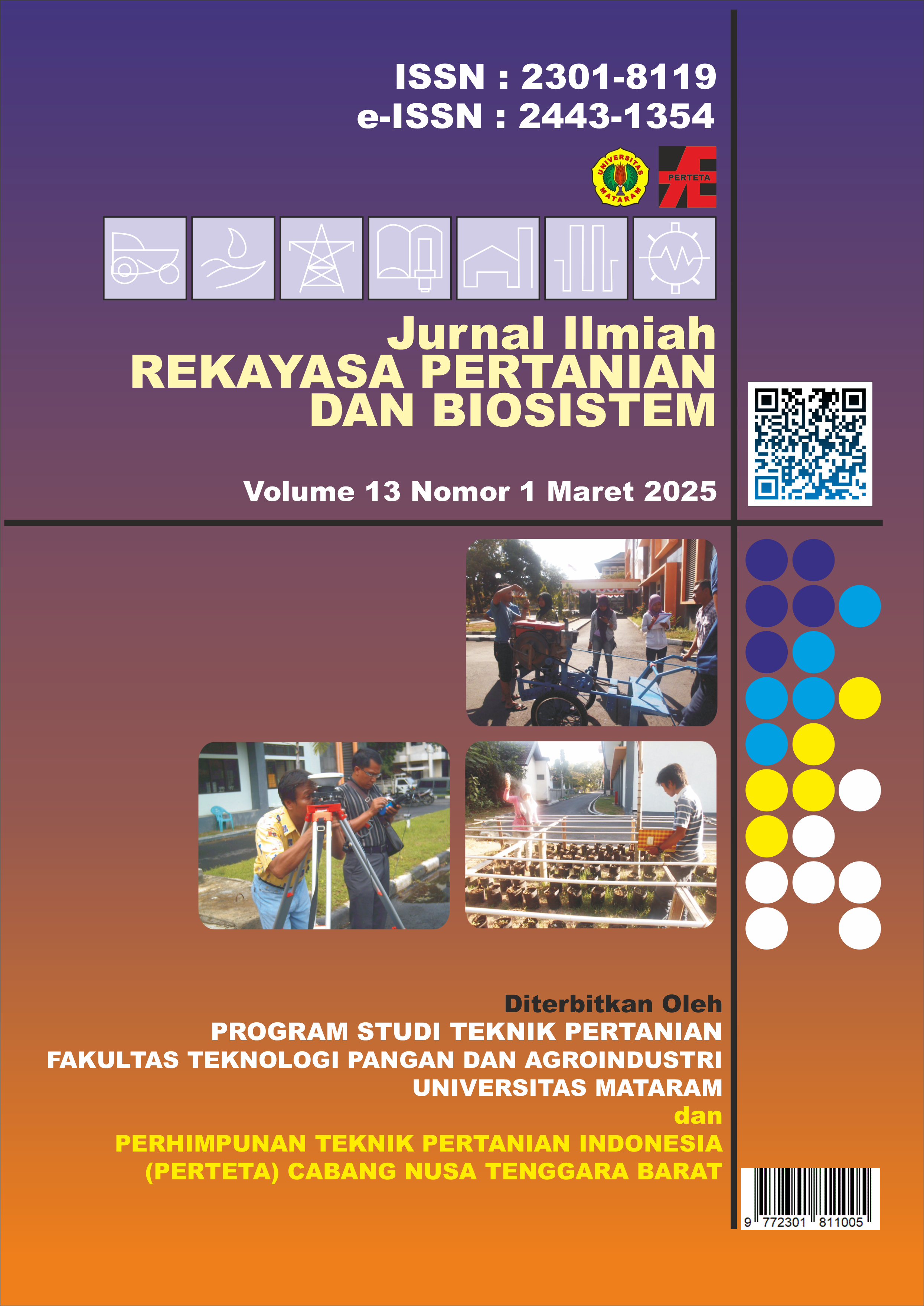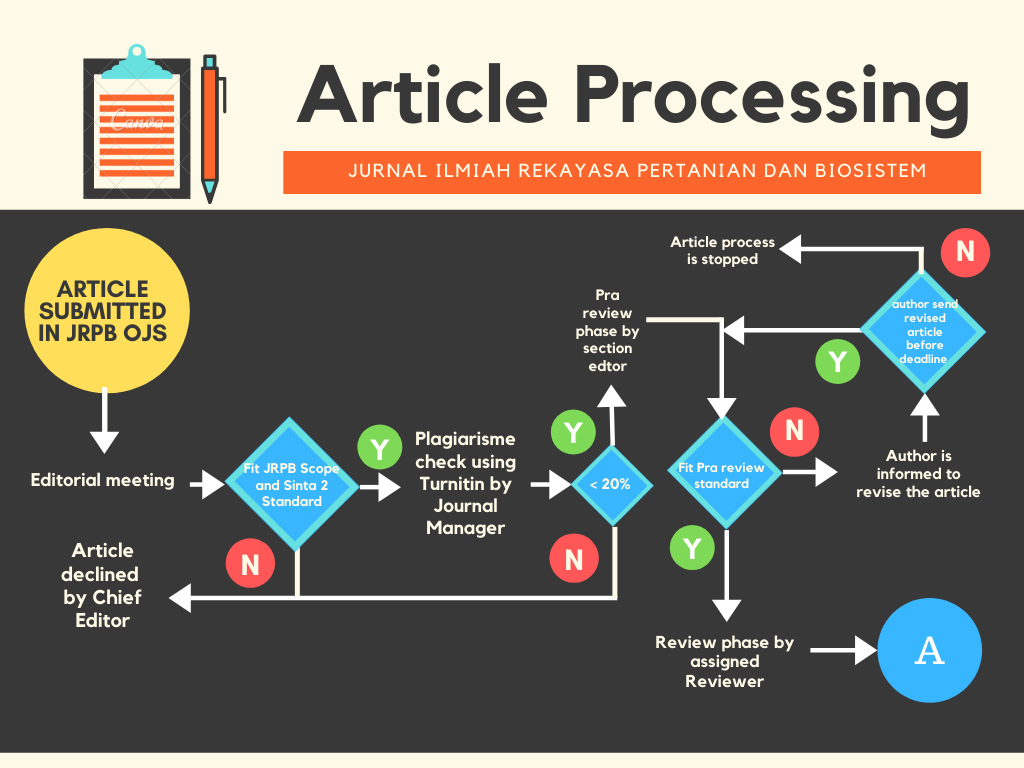Physical Analysis of Honey After Processed with Vacuum Cooling Four in One Evaporator Machine on Industrial Scale
Authors
M. Amin Muzaki , Anang Lastriyanto , Moch. Bagus Hermanto , Sandra Malin Sutan , Ary Mustofa Ahmad , Sasongko Aji Wibowo , Vincentia Veni Vera , Khoiril AnamDOI:
10.29303/jrpb.v13i1.1153Published:
2025-03-27Issue:
Vol. 13 No. 1 (2025): Jurnal Ilmiah Rekayasa Pertanian dan BiosistemKeywords:
honey, pasteurization, vacuum evaporator, vacuum coolingArticles
Downloads
How to Cite
Downloads
Abstract
Honey has significant health benefits due to its rich content of nutrients, enzymes, and bioactive compounds. However, conventional processing methods such as pasteurization can potentially degrade the physical and chemical quality of honey, including moisture content, density, total soluble solids, viscosity, and color stability. This study examines the effectiveness of the Evaporator Vacuum Cooling Four in One technology in maintaining the quality of Acacia honey compared to various pasteurization durations. The results show that vacuum cooling technology significantly preserves honey quality in terms of moisture content, density, and total soluble solids at a better level than conventional methods. Additionally, vacuum cooling optimally maintains honey's viscosity and color, demonstrating its superiority in reducing damage to bioactive components. This study is expected to contribute to the development of more efficient honey processing technology in the industry, aiming to provide high-quality honey that meets consumer health standards.
References
Ahmed, J., Ramaswamy, H. S., Ayad, A., Alli, I., & Alvarez, P. (2007). Effect of high-pressure treatment on rheological, thermal and structural changes in Basmati rice flour slurry. Journal of Cereal Science, 46(2), 148-156. DOI: https://doi.org/10.1016/j.jcs.2007.01.006
Anwariyah, R., Lastriyanto, A., & Sumarlan, S. H. (2018). Efek penggorengan berulang menggunakan vacuum frying terhadap kualitas fisik dan kimia minyak goreng pada penggorengan ikan lele (Clarias Gariepinus B.). Journal of Tropical Agricultural Engineering Biosystems-Jurnal Keteknikan Pertanian Tropis dan Biosistem, 6(2), 172-178.
Ávila, S., Beux, M. R., Ribani, R. H., & Zambiazi, R. C. (2018). Stingless bee honey: Quality parameters, bioactive compounds, health-promotion properties and modification detection strategies. Trends in Food Science Technology, 81, 37-50. DOI: https://doi.org/10.1016/j.tifs.2018.09.002
Cahyani, S. A., Lastriyanto, A., Sutan, S. M., & Sumardi, S. (2021). The effects of vacuum cooling to post-pasteurized honey on diastase enzyme activity and physical properties of Riau Forest Honey. Canrea Journal: Food Technology, Nutritions, Culinary Journal, 114-122. DOI: https://doi.org/10.20956/canrea.v4i2.459
Cornara, L., Biagi, M., Xiao, J., & Burlando, B. (2017). Therapeutic properties of bioactive compounds from different honeybee products. Frontiers in pharmacology, 8, 412. DOI: https://doi.org/10.3389/fphar.2017.00412
Dissanayake, M. (2023). Abstract book of Undergraduate Research Symposium. Faculty of Agricultural Sciences, Sabaragamuwa University of Sri Lanka.
Habibi, N. A., Palupi, N. H. S., & Sitanggang, A. B. (2020). Stabilitas madu herbal dengan penambahan emulsifier dan antioksidan menggunakan metode spontan. Indonesian Journal of Industrial Research, 10(2), 111-120. DOI: https://doi.org/10.24960/jli.v10i2.6114.111-120
Hasam, S., Qarizada, D., & Azizi, M. (2020). A review: honey and its nutritional composition. Asian Journal of Research in Biochemistry, 7(3), 34-43. DOI: https://doi.org/10.9734/ajrb/2020/v7i330142
Hegazi, N. M., Elghani, G. E. A., & Farag, M. A. (2022). The super-food Manuka honey, a comprehensive review of its analysis and authenticity approaches. Journal of Food Science Technology, 59(7), 2527-2534. DOI: https://doi.org/10.1007/s13197-021-05181-7
Iftikhar, A., Nausheen, R., Mukhtar, I., Iqbal, R. K., Raza, A., Yasin, A., & Anwar, H. (2023). The regenerative potential of honey: A comprehensive literature review. Journal of Apicultural Research, 62(1), 97-112. DOI: https://doi.org/10.1080/00218839.2022.2028969
Kang, T., You, Y., & Jun, S. (2020). Supercooling preservation technology in food and biological samples: A review focused on electric and magnetic field applications. Food science biotechnology, 29, 303-321. DOI: https://doi.org/10.1007/s10068-020-00750-6
Lastriyanto, A., Wibowo, S. A., Anam, K., Muzaki, M. A., Vera, V. V., & Prayogi, I. Y. (2023). Uji Fungsional Metode Ohmic Heating Terhadap Perubahan Mutu Madu Karet Pada Proses Pasteurisasi. Jurnal Ilmiah Rekayasa Pertanian dan Biosistem, 11(2), 314-324. DOI: https://doi.org/10.29303/jrpb.v11i2.535
Lin, H., Zhao, S., Han, X., Guan, W., Liu, B., Chen, A., . . . Wang, J. (2022). Effect of static magnetic field extended supercooling preservation on beef quality. Food Chemistry, 370, 131264. DOI: https://doi.org/10.1016/j.foodchem.2021.131264
Luo, X., Dong, Y., Gu, C., Zhang, X., & Ma, H. (2021). Processing technologies for bee products: An overview of recent developments and perspectives. Frontiers in Nutrition, 8, 727181. DOI: https://doi.org/10.3389/fnut.2021.727181
Machado, A. (2022). Volatile chemical characterization and biological activity assessment of Portuguese honey types: importance of botanical origin.
Manickavasagam, G., Saaid, M., & Lim, V. (2024). Impact of prolonged storage on quality assessment properties and constituents of honey: A systematic review. Journal of Food Science, 89(2), 811-833. DOI: https://doi.org/10.1111/1750-3841.16921
Nasional, B. S. (2018). Standar Nasional Indonesia SNI 8664: 2018 Madu. In.
Nintyas, S., & Caesaron, D. (2015). Pengaruh Kecepatan Putar Spindel Dalam Dengan Metode Anova. Journal of Industrial Engineering Management System, 8(1), 70-78.
Park, D. H., Lee, S., Lee, J., Kim, E. J., Jo, Y.-J., Kim, H., . . . Hong, G.-P. (2021). Stepwise cooling mediated feasible supercooling preservation to extend freshness of mackerel fillets. LWT, 152, 112389. DOI: https://doi.org/10.1016/j.lwt.2021.112389
Pérez-Rosas, M. A., García-Guevara, Y. N., Fuentes-Rubio, Y. A., Domínguez-Cruz, R. F., Baldovino-Pantaleón, O., & Romero-Galván, G. J. A. S. (2024). Multimodal Interference-Based Fiber Optic Sensors for Glucose and Moisture Content Detection in Honey. 14(17), 7914. DOI: https://doi.org/10.3390/app14177914
Perri, G., Coda, R., Rizzello, C. G., Celano, G., Ampollini, M., Gobbetti, M., . . . Calasso, M. (2021). Sourdough fermentation of whole and sprouted lentil flours: In situ formation of dextran and effects on the nutritional, texture and sensory characteristics of white bread. Food Chemistry, 355, 129638. DOI: https://doi.org/10.1016/j.foodchem.2021.129638
Saputri, N. A., Pathiassana, M. T., Gaibi, N., Septiani, A. D., & Pathiussina, R. T. (2023). Analisis Pengaruh Suhu Terhadap Warna, Densitas, Dan Viskositas Madu Hutan Lebah Apis Dorsata Dari Kecamatan Lunyuk-Sumbawa. Jurnal Pengolahan Pangan, 8(1), 1-8. DOI: https://doi.org/10.31970/pangan.v8i1.79
Sari, D. N. (2023). Karakteristik Madu Hutan Lebah Apis Dorsata Daerah Sulawesi Tenggara Ditinjau Dari Sifat Fisika-Kimia. Cokroaminoto Journal of Chemical Science, 5(2), 42-46.
Sarig, Y., O. Sarig, & E. Siegler. 2011. U.S. Patent Application Publication: Semi-Solid Honey-Based Products. United States. Diakses dari https://patents. google.com/patent/WO20 10052703A1
Sobulska, M., & Zbicinski, I. (2021). Advances in spray drying of sugar-rich products. Drying Technology, 39(12), 1774-1799. DOI: https://doi.org/10.1080/07373937.2020.1832513
Tarapoulouzi, M., Mironescu, M., Drouza, C., Mironescu, I. D., & Agriopoulou, S. (2023). Insight into the recent application of Chemometrics in quality analysis and characterization of bee honey during processing and storage. Foods, 12(3), 473. DOI: https://doi.org/10.3390/foods12030473
White Jr, J. W. (1978). Honey. Advances in food research, 24, 287-374. DOI: https://doi.org/10.1016/S0065-2628(08)60160-3
Wibowo, S. A., Lastriyanto, A., Hawa, L. C., Erwan, E., Junus, M., Jaya, F., . . . Lamerkabel, J. (2021). Unjuk Kinerja Alat Pasteurisasi pada Proses Pasteurisasi Madu: Studi Kasus PT Kembang Joyo Sriwijaya. Jurnal Ilmiah Rekayasa Pertanian dan Biosistem, 9(1), 11-21. DOI: https://doi.org/10.29303/jrpb.v9i1.181
Wibowo, S. A., Lastriyanto, A., Sumarlan, S., Susilo, B., Prayogi, I., Muzaki, M., . . . Anam, K. (2024). Water Jet Vacuum Cooling System For Improving The Quality Of Multiflora Honey From Bee (Apis Dorsata Fabricus) In Indonesia. African Journal of Food, Agriculture, Nutrition Development, 24(4). DOI: https://doi.org/10.18697/ajfand.129.24130
Wibowo, S. A., Lastriyanto, A., Vera, V. V., Susilo, B., Sumarlan, S. H., Hawa, L. C., & Zubaidah, E. (2022). Analisis Mutu Madu Setelah Proses Pasteurisasi dan Pendinginan Cepat. Jurnal Ilmiah Rekayasa Pertanian dan Biosistem, 10(2), 203-212. DOI: https://doi.org/10.29303/jrpb.v10i2.407
Wulandari, D. D. J. J. K. R. (2017). Analisa kualitas madu (keasaman, kadar air, dan kadar gula pereduksi) berdasarkan perbedaan suhu penyimpanan. 2(1), 16-22. DOI: https://doi.org/10.20473/jkr.v2i1.3768
Yu, H., Mei, J., & Xie, J. (2022). New ultrasonic assisted technology of freezing, cooling and thawing in solid food processing: A review. Ultrasonics Sonochemistry, 90, 106185. DOI: https://doi.org/10.1016/j.ultsonch.2022.106185
Zarei, M., Fazlara, A., & Tulabifard, N. (2019). Effect of thermal treatment on physicochemical and antioxidant properties of honey. Heliyon, 5(6). DOI: https://doi.org/10.1016/j.heliyon.2019.e01894
Zhu, Z., Li, T., & Sun, D.-W. (2021). Pressure-related cooling and freezing techniques for the food industry: fundamentals and applications. Critical Reviews in Food Science Nutrition, 61(17), 2793-2808. DOI: https://doi.org/10.1080/10408398.2020.1841729
License
Copyright (c) 2025 M. Amin Muzaki, Anang Lastriyanto, Moch. Bagus Hermanto, Sandra Malin Sutan, Ary Mustofa Ahmad, Sasongko Aji Wibowo, Vincentia Veni Vera, Khoiril Anam

This work is licensed under a Creative Commons Attribution-ShareAlike 4.0 International License.
Authors who publish with this journal agree to the following terms:
- Authors retain copyright and grant the journal right of first publication with the work simultaneously licensed under a Creative Commons Attribution License 4.0 International License (CC-BY-SA License). This license allows authors to use all articles, data sets, graphics, and appendices in data mining applications, search engines, web sites, blogs, and other platforms by providing an appropriate reference. The journal allows the author(s) to hold the copyright without restrictions and will retain publishing rights without restrictions.
- Authors are able to enter into separate, additional contractual arrangements for the non-exclusive distribution of the journal's published version of the work (e.g., post it to an institutional repository or publish it in a book), with an acknowledgement of its initial publication in Jurnal Ilmiah Rekayasa Pertanian dan Biosistem (JRPB).
- Authors are permitted and encouraged to post their work online (e.g., in institutional repositories or on their website) prior to and during the submission process, as it can lead to productive exchanges, as well as earlier and greater citation of published work (See The Effect of Open Access).










